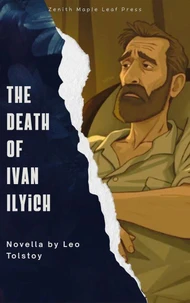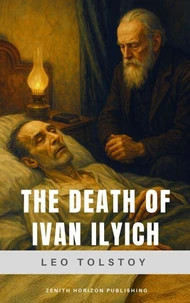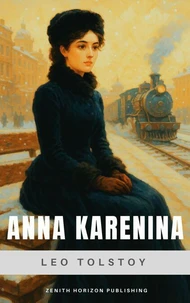God Sees the Truth, But Waits
Par :Formats :
Disponible dans votre compte client Decitre ou Furet du Nord dès validation de votre commande. Le format ePub est :
- Compatible avec une lecture sur My Vivlio (smartphone, tablette, ordinateur)
- Compatible avec une lecture sur liseuses Vivlio
- Pour les liseuses autres que Vivlio, vous devez utiliser le logiciel Adobe Digital Edition. Non compatible avec la lecture sur les liseuses Kindle, Remarkable et Sony
 , qui est-ce ?
, qui est-ce ?Notre partenaire de plateforme de lecture numérique où vous retrouverez l'ensemble de vos ebooks gratuitement
Pour en savoir plus sur nos ebooks, consultez notre aide en ligne ici
- Nombre de pages12
- FormatePub
- ISBN978-2-37787-655-6
- EAN9782377876556
- Date de parution06/03/2018
- Protection num.Digital Watermarking
- Taille429 Ko
- Infos supplémentairesepub
- ÉditeurWSBLD
Résumé
"God Sees the Truth, But Waits" (Russian: "??? ?????? ?????, ?? ?? ????? ??????", "Bog pravdu vidit da ne skoro skazhet") is a short story by Russian author Leo Tolstoy first published in 1872. The story, about a man sent to prison for a murder he didn't commit, takes the form of a parable of forgiveness. English translations were also published under titles "The Confessed Crime" and "Exiled to Siberia".
The concept of the story of a man wrongfully accused of murder and banished to Siberia also appears in one of Tolstoy's previous works, War and Peace, during a philosophical discussion between two characters who relate the story and argue how the protagonist of their story deals with injustice and fate.
The concept of the story of a man wrongfully accused of murder and banished to Siberia also appears in one of Tolstoy's previous works, War and Peace, during a philosophical discussion between two characters who relate the story and argue how the protagonist of their story deals with injustice and fate.
"God Sees the Truth, But Waits" (Russian: "??? ?????? ?????, ?? ?? ????? ??????", "Bog pravdu vidit da ne skoro skazhet") is a short story by Russian author Leo Tolstoy first published in 1872. The story, about a man sent to prison for a murder he didn't commit, takes the form of a parable of forgiveness. English translations were also published under titles "The Confessed Crime" and "Exiled to Siberia".
The concept of the story of a man wrongfully accused of murder and banished to Siberia also appears in one of Tolstoy's previous works, War and Peace, during a philosophical discussion between two characters who relate the story and argue how the protagonist of their story deals with injustice and fate.
The concept of the story of a man wrongfully accused of murder and banished to Siberia also appears in one of Tolstoy's previous works, War and Peace, during a philosophical discussion between two characters who relate the story and argue how the protagonist of their story deals with injustice and fate.










